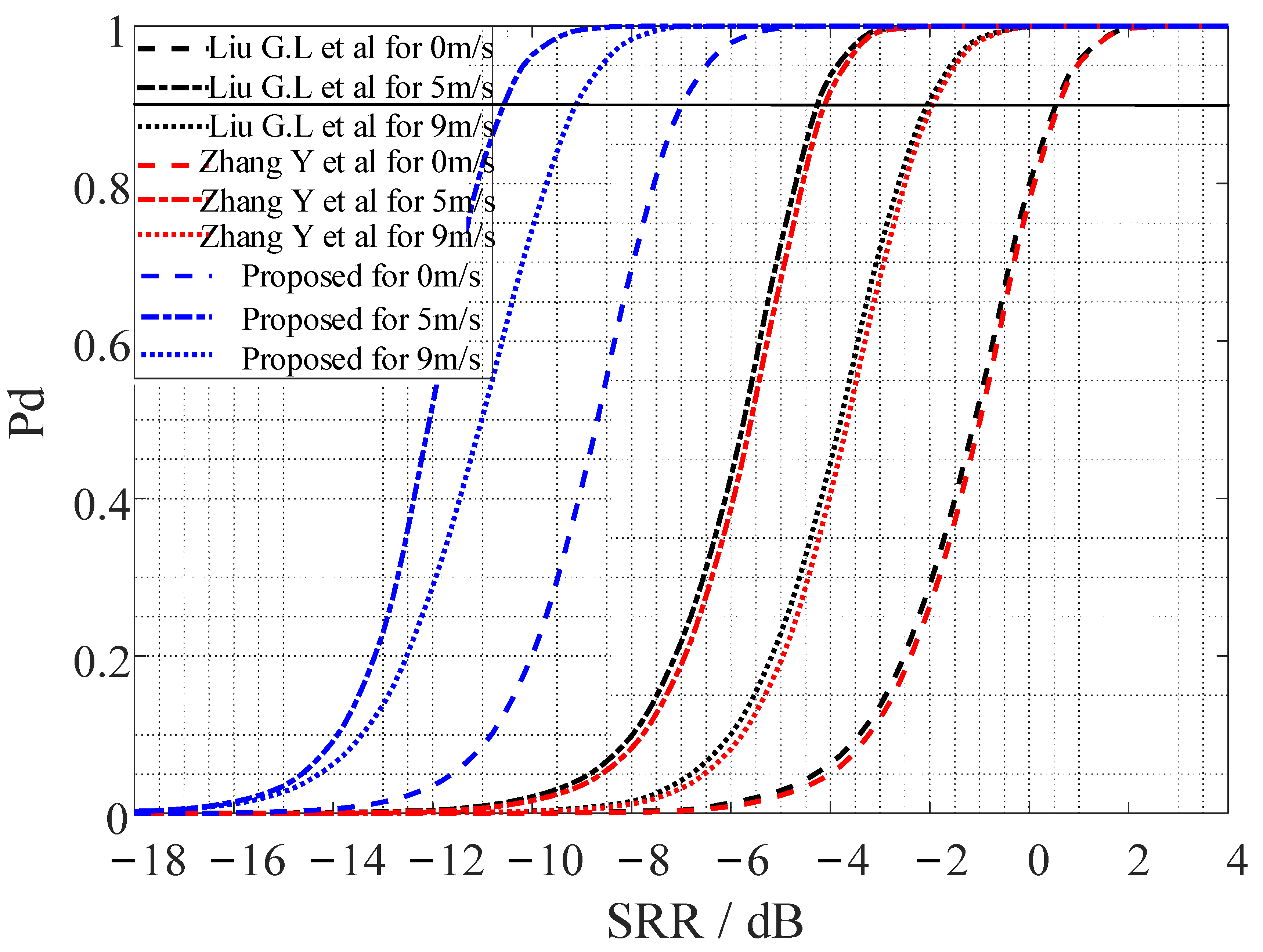A Reverberation Suppression Method Based on the Joint Design of a PTFM Waveform and Receiver Filter
Abstract
1. Introduction
- We deduced and analyzed the PTFM signal’s spectrum, distance ambiguity function adjacent lobe spacing, ranging resolution, distance ambiguity function sidelobe level, and velocity ambiguity function sidelobe position.
- Based on derivation and analysis conclusions, we revealed the mechanism by which PTFM signal parameters affect the comb spectrum and nail plate ambiguity function. We then designed anti-reverberation PTFM signal parameters.
- To address the reduction in detection probability and further improve detection ability for moving targets that are problematic in the traditional threshold setting and signal processing methods, we introduced the estimate-before-detect threshold setting strategy and comb spectrum waveform cognitive filtering detection algorithm.
2. Analyses of the PTFM Signal Spectrum and Ambiguity Function
2.1. Derivation and Characteristic Analysis of the PTFM Signal’s Spectral Expression
2.2. Derivation and Characteristic Analysis of the PTFM Signal’s Ambiguity Function
3. Joint Design of the PTFM Waveform and Receiver Filter
3.1. Anti-Reverberation PTFM Signal Design
3.2. Comb Spectrum Waveform Cognitive Filtering Algorithm Design
4. Simulation Results and Discussion
4.1. Computer Simulation Results and Discussion
4.2. Measured Data Results and Discussion
5. Conclusions
Author Contributions
Funding
Institutional Review Board Statement
Informed Consent Statement
Data Availability Statement
Conflicts of Interest
Appendix A
Appendix A.1. Derivation of the PTFM Spectrum
Appendix A.2. Derivation of the PTFM Ambiguity Function in Frequency Domain
References
- Karbasi, S.M.; Aubry, A.; De Maio, A.; Bastani, M.H. Robust transmit code and receive filter design for extended targets in clutter. IEEE Trans. Signal Process. 2015, 63, 1965–1976. [Google Scholar] [CrossRef]
- Zhou, Q.; Li, Z.; Shi, J.; Mao, Y. Robust cognitive transmit waveform and receive filter design for airborne MIMO radar in signal-dependent clutter environment. Digit. Signal Process. 2020, 101, 102709. [Google Scholar] [CrossRef]
- Ge, M.; Yu, X.; Yan, Z.; Cui, G.; Kong, L. Joint cognitive optimization of transmit waveform and receive filter against deceptive interference. Signal Process. 2021, 185, 108084. [Google Scholar] [CrossRef]
- Wang, Y.; He, Y.; Wang, J.; Shi, Z. Comb waveform optimisation with low peak-to-average power ratio via alternating projection. IET Radar Sonar Navig. 2018, 12, 1012–1020. [Google Scholar] [CrossRef]
- Hague, D.A.; Buck, J.R. An experimental evaluation of the generalized sinusoidal frequency modulated waveform for active sonar systems. J. Acoust. Soc. Am. 2019, 145, 3741–3755. [Google Scholar] [CrossRef] [PubMed]
- Fan, W.; Liang, J.; Yu, G.; So, H.C.; Lu, G. Minimum local peak sidelobe level waveform design with correlation and/or spectral constraints. Signal Process. 2020, 171, 107450. [Google Scholar] [CrossRef]
- Azar, O.P.; Amiri, H.; Razzazi, F. Enhanced target detection using a new combined sonar waveform design. Telecommun. Syst. 2021, 77, 317–334. [Google Scholar] [CrossRef]
- Rui, G.; Wang, X.T.; Cai, Z.M. Comparison Research on Reverberation Strength Excited by PTFM and CW Signals. In Proceedings of the IEEE 13th International Conference on Signal Processing (ICSP), Chengdu, China, 6 November 2016. [Google Scholar]
- Wang, X.T.; Rui, G.; Cai, Z.M. Experimental Research on Doppler Spread of Reverberation Using PTFM Signals. In Proceedings of the IEEE International Conference on Digital Signal Processing, Beijing, China, 16–18 October 2016. [Google Scholar]
- Soli, J.; Hickman, G. Comparison of Comb and Pulse Train Signal Designs for Active Sonar. In Proceedings of the 2016 IEEE Sensor Array and Multichannel Signal Processing Workshop (SAM), Chengdu, China, 6–10 November 2016; pp. 1–5. [Google Scholar]
- Soli, J.; Hickman, G.; Krolik, J. Range–Velocity Estimation Bounds for Nonuniform Sonar Comb Signals. IEEE Trans. Aerosp. Electron. Syst. 2018, 54, 2980–2991. [Google Scholar] [CrossRef]
- Guan, C.; Zhou, Z.; Zeng, X. Optimization of the Generalized Sinusoidal Frequency Modulated Pulse Trains for Continuous Active Sonar. In Proceedings of the 2018 IEEE International Conference on Signal Processing, Communications and Computing (ICSPCC), Qingdao, China, 14–16 September 2018. [Google Scholar]
- Buck, J.R.; Hague, D.A. The Generalized Sinusoidal Frequency-Modulated Waveform for Active Sonar. IEEE J. Ocean. Eng. 2017, 42, 109–123. [Google Scholar]
- Liu, G.L.; Ling, G.M.; Yan, Q. Fast Multi-Copy Filtering/Correlation Techniques on Comb-Spectrum Signals. Signal Process. 2007, 23, 888–890. [Google Scholar]
- Zhang, Y. Research on Methods of Active Sonar Target Detection in Shallow Water Condition; Harbin Engineering University: Harbin, China, 2013. [Google Scholar]
- Doisy, Y.; Deruaz, L.; Van Ijsselmuide, S.P.; Beerens, S.P.; Been, R. Reverberation Suppression Using Wideband Doppler-Sensitive Pulses. IEEE J. Ocean. Eng. 2008, 33, 419–433. [Google Scholar] [CrossRef]
- Zhang, D.; Gao, L.; Teng, T.; Jia, Z. Underwater moving target detection using track-before-detect method with low power and high refresh rate signal. Appl. Acoust. 2020, 174, 107750. [Google Scholar] [CrossRef]

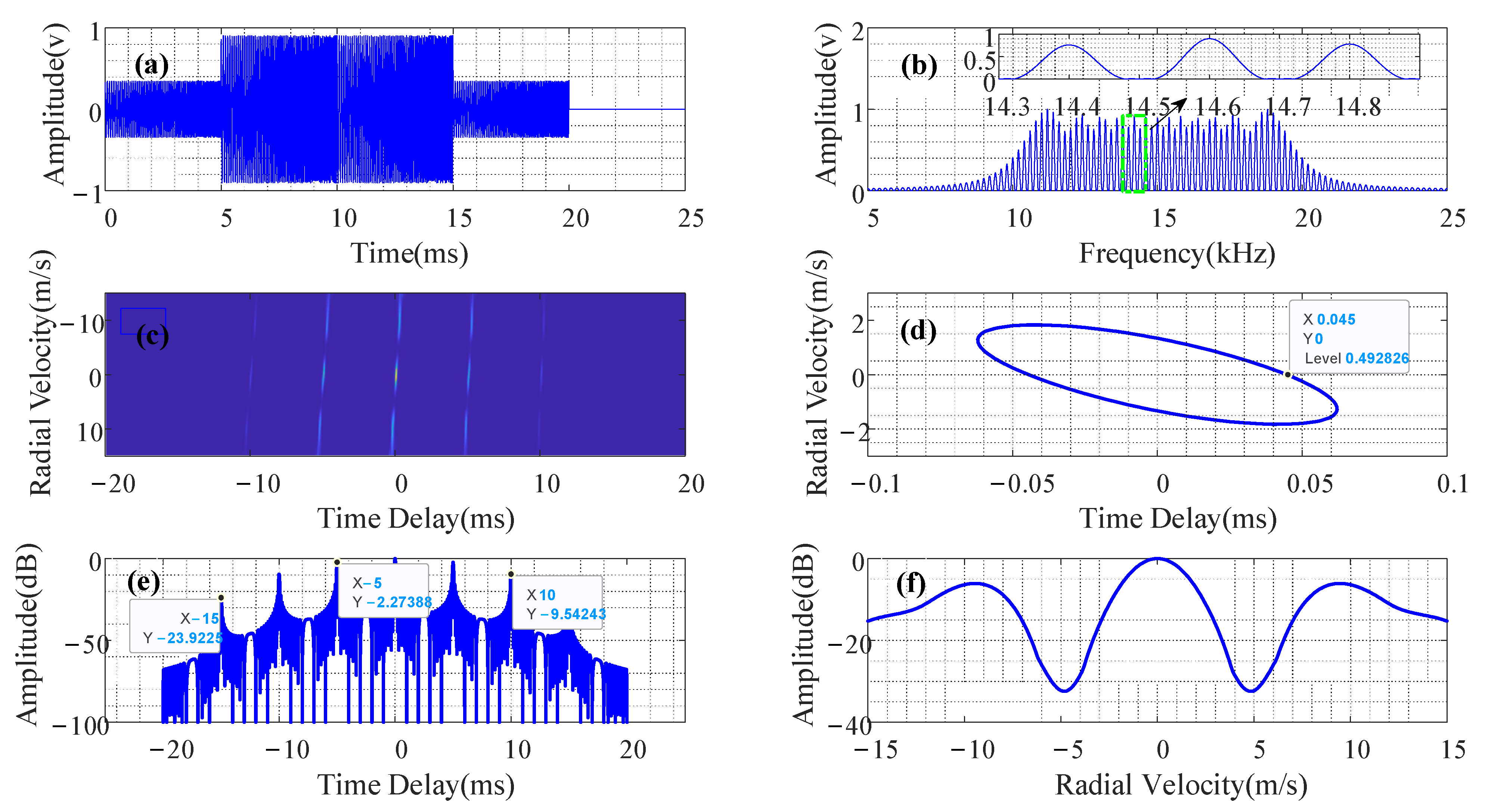
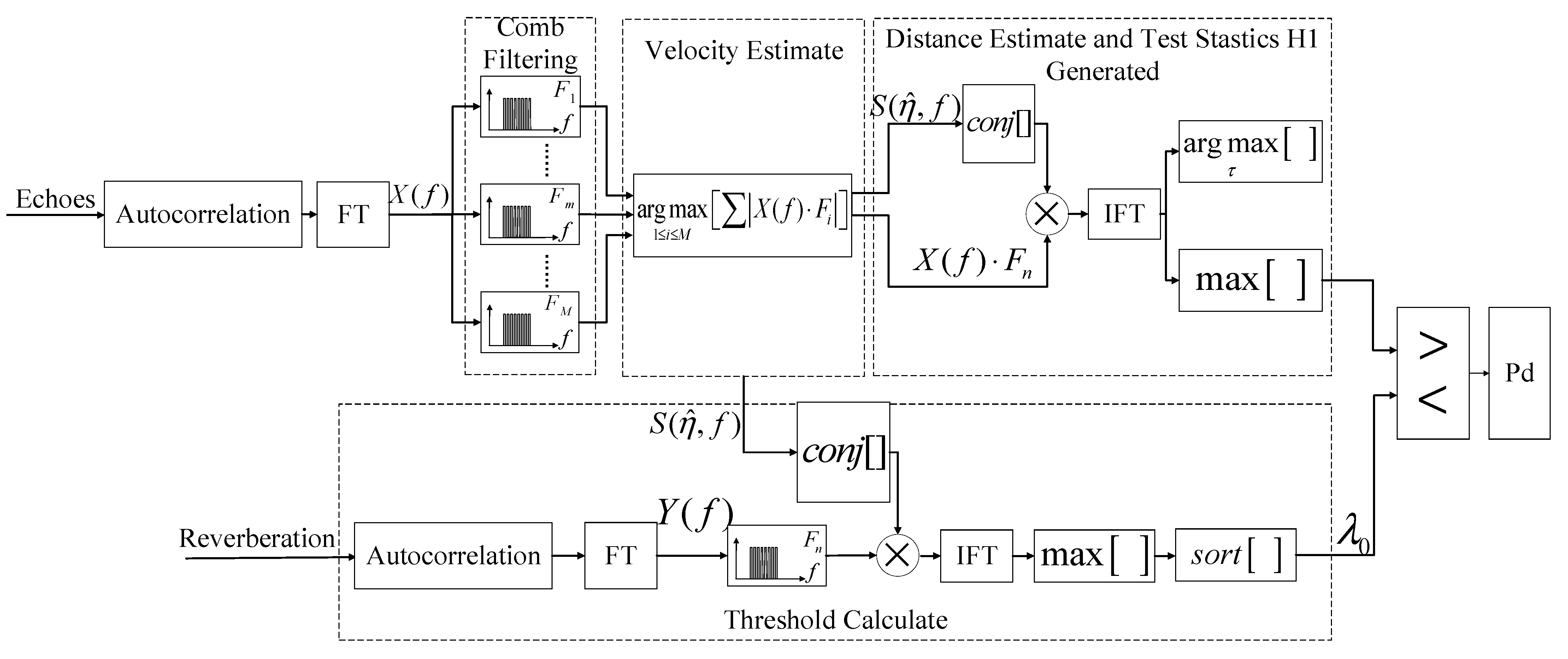
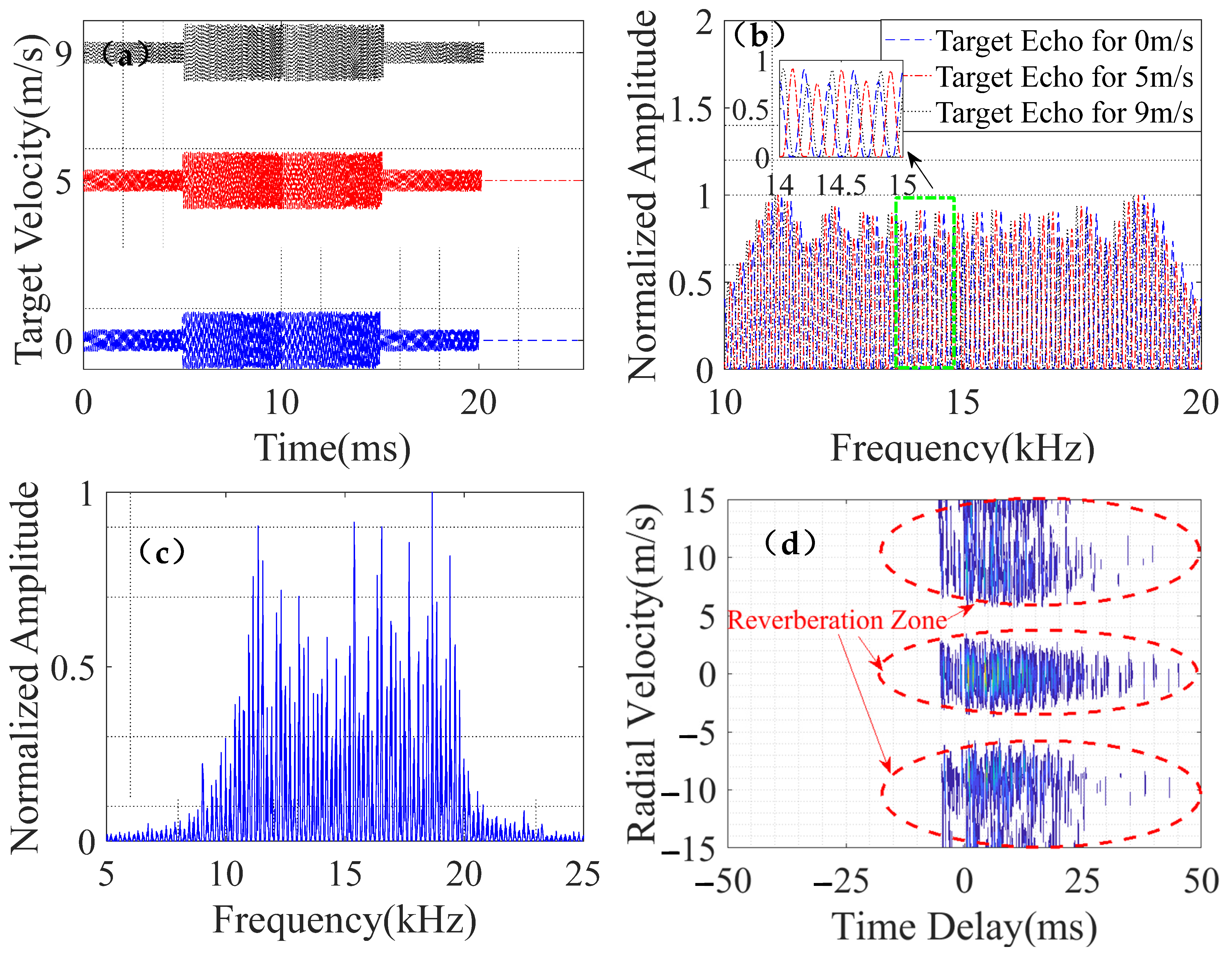
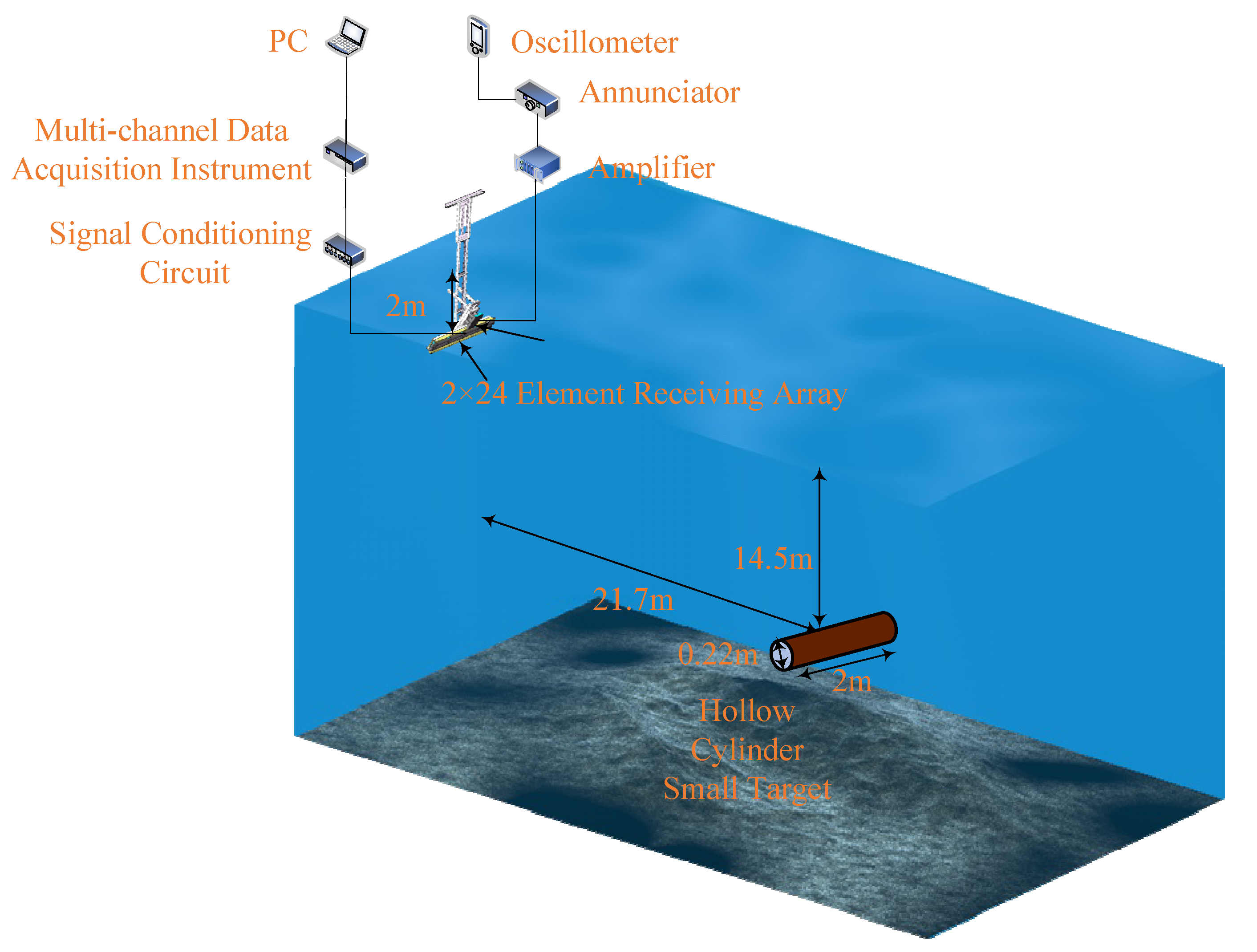
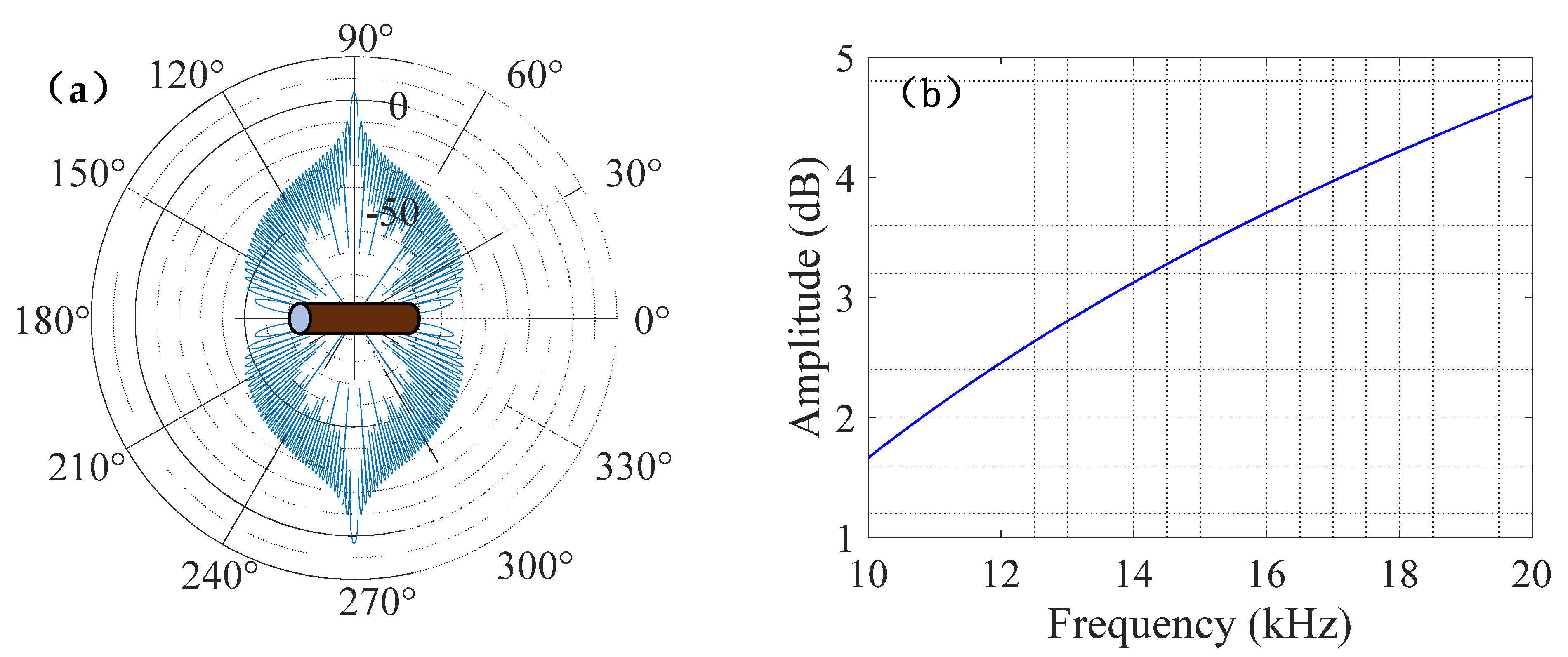

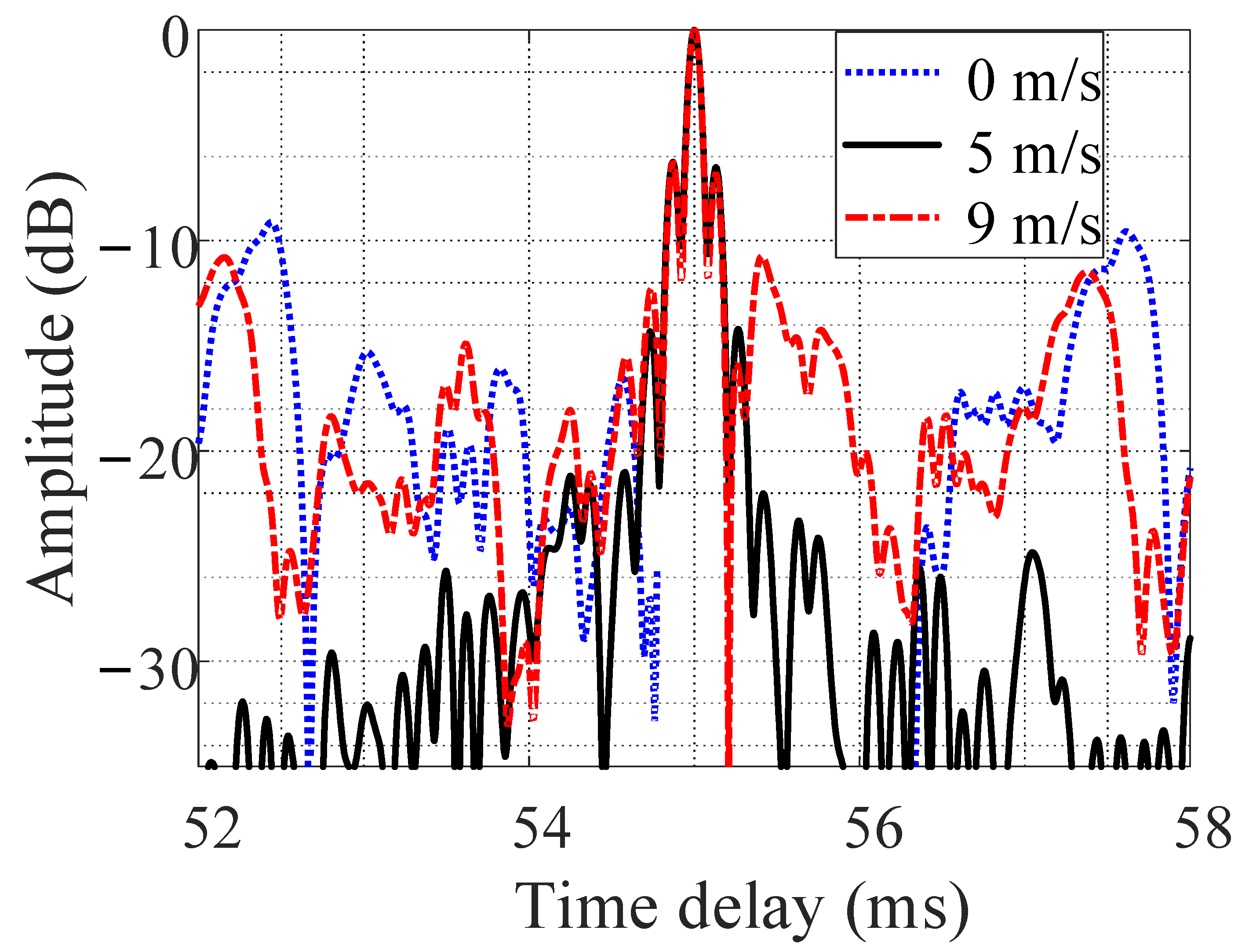
Publisher’s Note: MDPI stays neutral with regard to jurisdictional claims in published maps and institutional affiliations. |
© 2022 by the authors. Licensee MDPI, Basel, Switzerland. This article is an open access article distributed under the terms and conditions of the Creative Commons Attribution (CC BY) license (https://creativecommons.org/licenses/by/4.0/).
Share and Cite
Yue, L.; Liang, H.; Duan, T.; Dai, Z. A Reverberation Suppression Method Based on the Joint Design of a PTFM Waveform and Receiver Filter. Entropy 2022, 24, 1707. https://doi.org/10.3390/e24121707
Yue L, Liang H, Duan T, Dai Z. A Reverberation Suppression Method Based on the Joint Design of a PTFM Waveform and Receiver Filter. Entropy. 2022; 24(12):1707. https://doi.org/10.3390/e24121707
Chicago/Turabian StyleYue, Lei, Hong Liang, Tong Duan, and Zezhou Dai. 2022. "A Reverberation Suppression Method Based on the Joint Design of a PTFM Waveform and Receiver Filter" Entropy 24, no. 12: 1707. https://doi.org/10.3390/e24121707
APA StyleYue, L., Liang, H., Duan, T., & Dai, Z. (2022). A Reverberation Suppression Method Based on the Joint Design of a PTFM Waveform and Receiver Filter. Entropy, 24(12), 1707. https://doi.org/10.3390/e24121707





